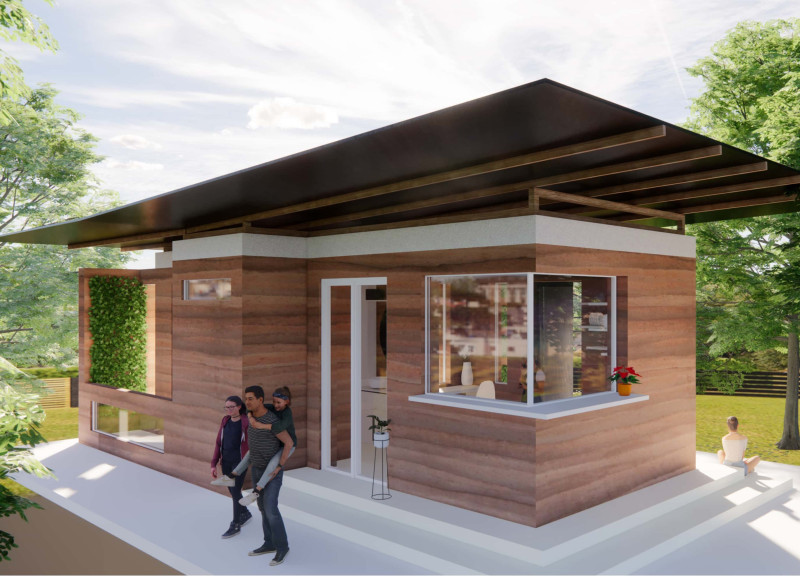5 key facts about this project
The layout of the Thinnai project promotes fluid interactions among residents and neighbors. The central entryway leads to interconnected living areas, making it an inviting space conducive to social engagement. The design incorporates vertical gardening, enhancing aesthetics while contributing to ecological health.
One of the primary features of the project is its use of rammed earth. This material not only provides structural integrity but also offers thermal regulation, promoting energy efficiency. Additionally, transparent wood is employed to create well-lit interiors while maintaining structural support. The choice of a steel roof accommodates solar panels, integrating renewable energy solutions into the design. Concrete is strategically used for its strength in key structural areas, further enhancing durability.
The project distinguishes itself through its eco-friendly elements. Rainwater harvesting systems are incorporated, allowing for an efficient water management strategy. The use of sheep wool insulation contributes to natural temperature control, emphasizing comfort without compromising sustainability.
Sustainable architectural practices are further exemplified by the incorporation of solar panels, which enhance energy self-sufficiency. By utilizing materials that minimize impact on the environment, this project sets a standard for modern residential designs, emphasizing minimal carbon footprints while celebrating cultural roots.
A unique aspect of Thinnai is its emphasis on blending indoor and outdoor living. The integration of vertical gardens not only serves as an aesthetic component but also plays a crucial role in improving air quality and promoting biodiversity. The balance between privacy and community interaction is achieved through thoughtful spatial design, where the traditional porch concept is reinterpreted to facilitate social engagement.
For a more in-depth understanding of the intricate details and ideas behind the Thinnai architectural project, readers are encouraged to explore the architectural plans, architectural sections, and architectural designs presented. A thorough examination of these elements will provide valuable insights into the innovative approaches leveraged in this sustainable design project.























